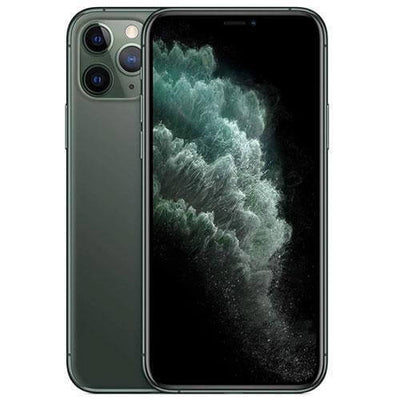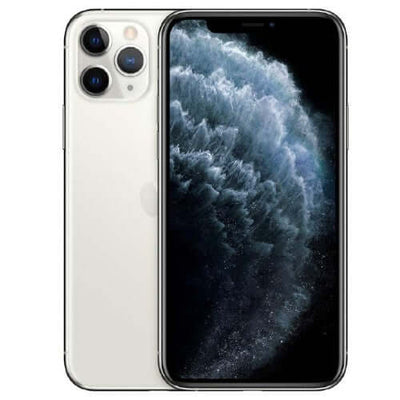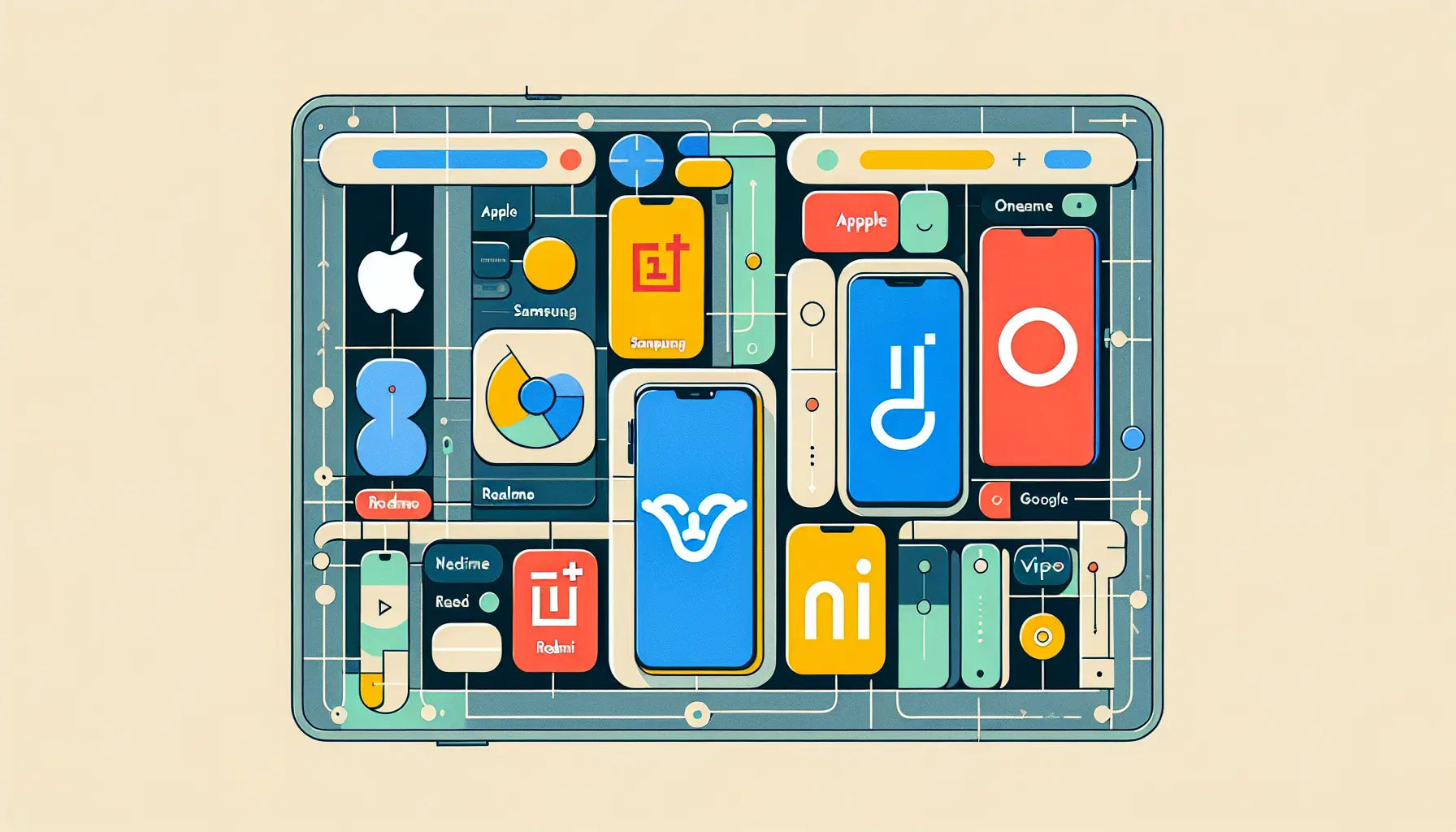Introduction
Smartphones have become indispensable in our daily lives, and the software they run on is like the beating heart that defines our experience with them. Welcome to this edition of the Fonezone newsletter, where we delve into the world of smartphone software, comparing the offerings from top brands such as Apple, Samsung, OnePlus, Realme, Redmi, Vivo, Oppo, and Google to discern which one truly delivers the ultimate user experience.
The significance of software in smartphones cannot be overstated. It's not just about how the icons are arranged on the screen; it's about how seamlessly the device integrates into our lives. The software dictates performance, security, and the availability of features, all of which are critical aspects of our smartphone interactions. A finely tuned software can elevate a smartphone, making it not just a tool but a companion that anticipates our needs and enhances our efficiency.
In our evaluation, we'll be scrutinizing various facets of these software offerings. From the user interface to customization options, from app availability to stability and security measures, we'll leave no stone unturned. Our aim is clear: to provide you, our readers, with valuable insights into which software ecosystem offers the most gratifying experience.
Through this newsletter, we aspire to empower you with the knowledge needed to make an informed decision when selecting your next smartphone. Our approach is unbiased, focusing solely on objectively comparing the strengths and weaknesses of each software platform. Ultimately, we want to equip you with the understanding to choose the software that resonates most with your preferences and fulfills your requirements.
Comparison of Software Features
When comparing the software features of different smartphone brands, several factors come into play. Let's take a closer look at some key aspects:
• UI11 software by Xiaomi and its advertisements
Xiaomi's UI11 software has been praised for its user-friendly interface and smooth performance. However, one downside is the presence of advertisements within the software. Users have reported seeing ads even on smartphones that cost more than Dhs.2,21,248.22 . While the software offers stock apps, they are often accompanied by unwanted ads, which can be frustrating for some users.
• Comparison of stock apps and ads in different smartphones
When it comes to stock apps and advertisements, there are variations among different smartphone brands. Some brands, like Realme and Vivo, have been criticized for including ads in their stock apps, which can disrupt the user experience. On the other hand, brands like OnePlus and Google have minimal ads in their software, providing a cleaner and more streamlined experience.
• Analysis of the number of pre-installed apps and extra applications in each smartphone
Another important factor to consider is the number of pre-installed apps and extra applications that come with each smartphone. For example, Xiaomi's UI11 software often includes extra applications, such as game apps and utility apps, which may not be essential for everyday use. In comparison, OnePlus devices have a minimal number of pre-installed apps, focusing on providing a cleaner interface for users.
• Comparison of software experience in terms of ads and bloatware
The overall software experience can be significantly influenced by the presence of ads and bloatware. Some brands, like Apple, Samsung, and Google, prioritize a bloatware-free experience with minimal ads in their software. On the other hand, brands like Xiaomi and Realme have been known to include more bloatware and advertisements, which can impact the overall user experience negatively.
It's important to note that each brand's software has its own strengths and weaknesses, and the best software experience will vary depending on individual preferences and needs. By considering factors like user interface, customization options, app availability, stability, and security, users can make an informed decision when choosing a smartphone that aligns with their requirements.
Security and Updates
When it comes to smartphones, security and regular software updates are crucial for a safe and seamless user experience. In this section, we will compare the security features and software updates of different smartphone brands, including Apple, Samsung, OnePlus, Realme, Redmi, Vivo, Oppo, and Google.
• Comparison of Security Features
Each smartphone brand has its own security features to safeguard users' data and protect against potential threats. Apple, Samsung, and Google are known for their robust security measures, providing features like biometric authentication (fingerprint or face recognition) and advanced encryption technologies.
On the other hand, brands like OnePlus, Realme, Redmi, Vivo, and Oppo also offer security features but may have variations in terms of the level of encryption and additional security options available.
• Frequency of Software Updates and Security Patches
Regular software updates and security patches are essential for keeping smartphones up to date with the latest features and security enhancements. Apple and Google devices generally receive prompt and frequent updates, ensuring that users have access to the latest software advancements and security patches.
While Samsung, OnePlus, Realme, Redmi, Vivo, and Oppo also provide software updates, the frequency and promptness may vary across different models and regions. It is important for users to consider the brand's track record in delivering timely updates.
• Importance of Regular Updates for User Experience and Security
Regular updates not only enhance the user experience by introducing new features and improvements but also play a crucial role in maintaining the security of the device. Software updates often include bug fixes, performance optimizations, and security patches that protect against known vulnerabilities.
By regularly updating their devices, users can ensure that they have access to the latest features, improvements, and security enhancements, providing a better overall smartphone experience and mitigating potential security risks.
• Analysis of the Ease of Removing Unwanted Applications
The ease of removing unwanted applications, also known as bloatware, can impact the overall user experience. Apple, Samsung, Google, OnePlus, and Realme generally provide more control over installed applications, allowing users to uninstall or disable unwanted apps easily.
However, brands like Redmi, Vivo, and Oppo may have a larger number of pre-installed applications that cannot be easily removed, potentially affecting storage space and user preferences.
It is important for users to consider their preferences regarding pre-installed applications and the ease of removing unwanted apps when choosing a smartphone brand.
Customization and User Experience
When it comes to smartphones, customization options play a significant role in enhancing the user experience. Let's compare the customization options in different smartphones and their impact on user satisfaction:
• Comparison of Customization Options
Each smartphone brand offers varying levels of customization options. Apple's iOS provides a streamlined and consistent user interface across its devices, with limited customization features. On the other hand, Android-based smartphones, such as Samsung, OnePlus, Realme, Redmi, Vivo, Oppo, and Google Pixel, offer more extensive customization options.
Android users can personalize their devices by changing themes, wallpapers, icons, and fonts. They can also customize the lock screen, notification settings, and app layouts according to their preferences. This flexibility allows users to create a unique look and feel for their smartphones.
• Comparison of Bloatware and Ease of Customization
Another important aspect to consider is the presence of bloatware, which refers to pre-installed apps that users may not find useful. Apple devices, such as iPhones, have minimal bloatware, providing a clean and clutter-free experience. On the other hand, Android devices, especially those from Xiaomi and Realme, may come with additional apps that some users may consider unnecessary.
When it comes to ease of customization, Android-based smartphones generally offer more flexibility compared to iOS. Android users can easily customize their devices using built-in settings or third-party apps, while iOS users have more limited customization options.
• Analysis of Unique Features and Customization Options
Each smartphone brand offers unique features and customization options that differentiate them from their competitors. For example, OnePlus devices come with a Zen Mode that helps users disconnect from their devices and focus on other activities. Google Pixel devices offer features like Live Caption and Now Playing, which enhance the overall user experience.
Samsung devices, on the other hand, provide a variety of customization options through their One UI software, allowing users to personalize their devices extensively. Realme devices offer a range of themes and customization options through their ColorOS software, giving users the ability to create a personalized look and feel.
Ultimately, the best software for customization depends on individual preferences and needs. Users who value extensive customization options may prefer Android-based smartphones, while those who prefer simplicity and a cohesive user interface may gravitate towards iOS devices like iPhones.
In conclusion, customization options play a significant role in the user experience of smartphones. By comparing the customization features, bloatware, and unique options offered by different brands, users can choose a smartphone that aligns with their customization preferences and enhances their overall smartphone experience.
Overall Comparison and Winner
After comparing the software of various smartphone brands like Apple, Samsung, OnePlus, Realme, Redmi, Vivo, Oppo, and Google, here are the key findings:
• Xiaomi's UI11 software offers a user-friendly interface but is often accompanied by unwanted advertisements.
• Realme and Vivo have been criticized for including ads in their stock apps, while OnePlus and Google have minimal ads.
• Xiaomi's UI11 software includes extra applications, whereas OnePlus devices have a minimal number of pre-installed apps.
• Apple, Samsung, and Google prioritize a bloatware-free experience with minimal ads in their software.
• Security features and software updates are crucial for a safe and seamless user experience.
• Apple, Samsung, and Google are known for their robust security measures and frequent software updates.
• Ease of removing unwanted applications varies among different brands, with Apple, Samsung, Google, and OnePlus providing more control.
• Android-based smartphones offer more customization options compared to iOS.
• Apple devices have minimal bloatware and provide a clean and clutter-free experience.
• Each brand's software has its own strengths and weaknesses, and the best software experience will vary depending on individual preferences.
Based on the analysis, the overall winner for the best software experience is a tie between Apple and Google. Both brands prioritize a bloatware-free experience, minimal ads, and frequent software updates. They also offer robust security features and provide customization options. Additionally, Apple's iOS provides a streamlined and consistent user interface, while Android-based smartphones offer more extensive customization options.
Ultimately, the best software choice will depend on individual preferences and needs. Users seeking simplicity and a cohesive user interface may prefer Apple's iOS, while those valuing extensive customization options may gravitate towards Android-based smartphones.
FAQ
Q1: What role does software play in smartphones?
A: Software is crucial in determining the overall user experience of smartphones. It affects the user interface, performance, security, and availability of features.
Q2: What aspects should be considered when comparing smartphone software?
A: Key aspects to consider include the user interface, customization options, app availability, stability, and security.
Q3: Which smartphone brands prioritize a bloatware-free experience?
A: Brands like Apple, Samsung, and Google prioritize a bloatware-free experience with minimal ads in their software.
Q4: How important are security features and software updates?
A: Security features and regular software updates are crucial for maintaining a safe and seamless user experience on smartphones. They protect against potential threats and provide access to the latest features and security enhancements.
Q5: Which smartphones offer extensive customization options?
A: Android-based smartphones, such as Samsung, OnePlus, Realme, Redmi, Vivo, Oppo, and Google Pixel, offer more extensive customization options compared to Apple's iOS.
Q6: Which smartphone brands offer the best overall software experience?
A: Based on our analysis, Apple and Google offer the best overall software experience. Both brands prioritize a bloatware-free experience, minimal ads, frequent software updates, and provide robust security features.
Q7: How important are software updates for the user experience and security?
A: Regular software updates are important for accessing the latest features, improvements, and security enhancements. They enhance the user experience and protect against known vulnerabilities.
Q8: Can unwanted applications be easily removed from smartphones?
A: Brands like Apple, Samsung, Google, and OnePlus provide more control over installed applications, allowing users to easily uninstall or disable unwanted apps. However, some brands may have a larger number of pre-installed applications that cannot be easily removed.
Q9: Which smartphone brands offer the most secure features?
A: Apple, Samsung, and Google are known for their robust security measures, providing features like biometric authentication and advanced encryption technologies. Other brands like OnePlus, Realme, Redmi, Vivo, and Oppo also offer security features, although there may be variations in terms of the level of encryption and additional security options available.






















